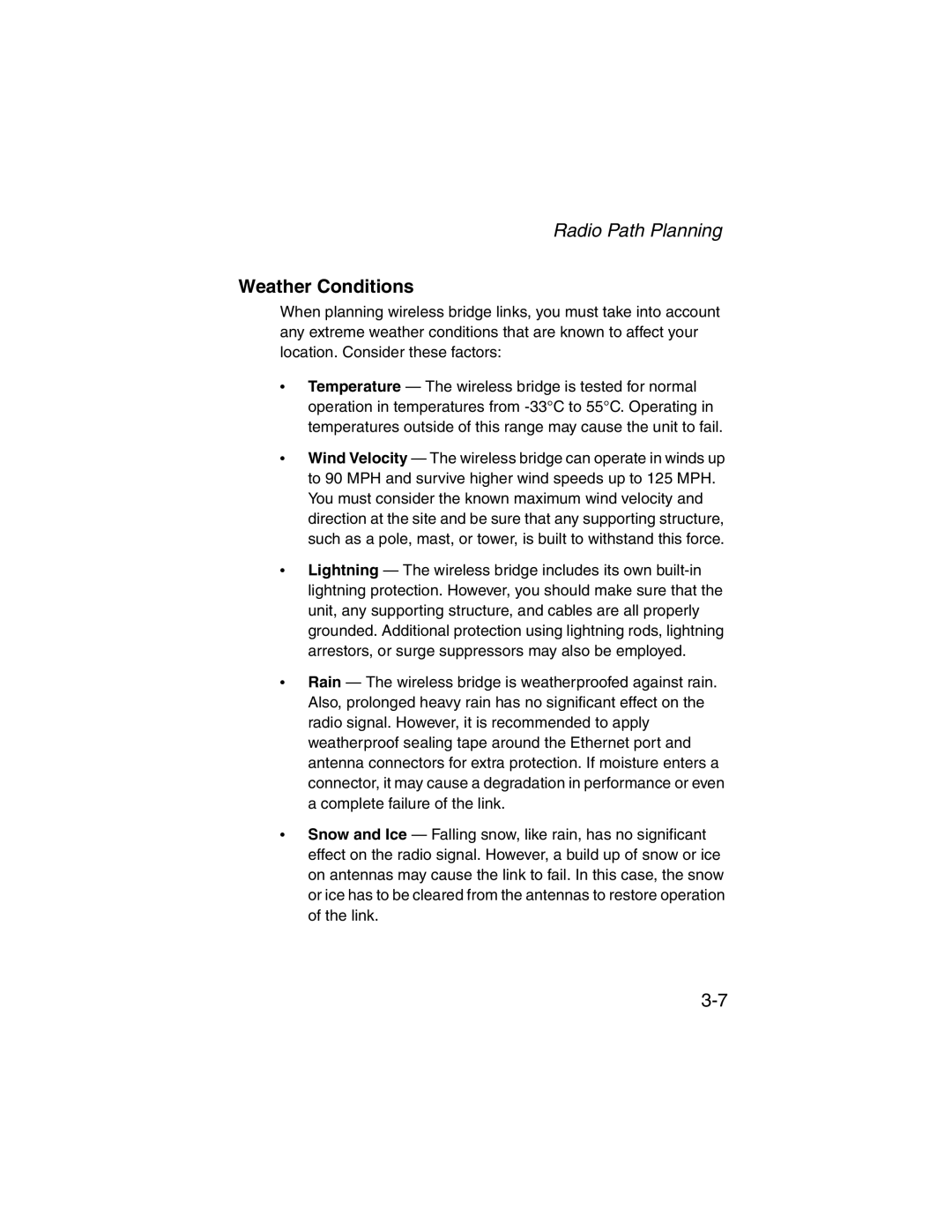Radio Path Planning
Weather Conditions
When planning wireless bridge links, you must take into account any extreme weather conditions that are known to affect your location. Consider these factors:
•Temperature — The wireless bridge is tested for normal operation in temperatures from
•Wind Velocity — The wireless bridge can operate in winds up to 90 MPH and survive higher wind speeds up to 125 MPH. You must consider the known maximum wind velocity and direction at the site and be sure that any supporting structure, such as a pole, mast, or tower, is built to withstand this force.
•Lightning — The wireless bridge includes its own
•Rain — The wireless bridge is weatherproofed against rain. Also, prolonged heavy rain has no significant effect on the radio signal. However, it is recommended to apply weatherproof sealing tape around the Ethernet port and antenna connectors for extra protection. If moisture enters a connector, it may cause a degradation in performance or even a complete failure of the link.
•Snow and Ice — Falling snow, like rain, has no significant effect on the radio signal. However, a build up of snow or ice on antennas may cause the link to fail. In this case, the snow or ice has to be cleared from the antennas to restore operation of the link.
